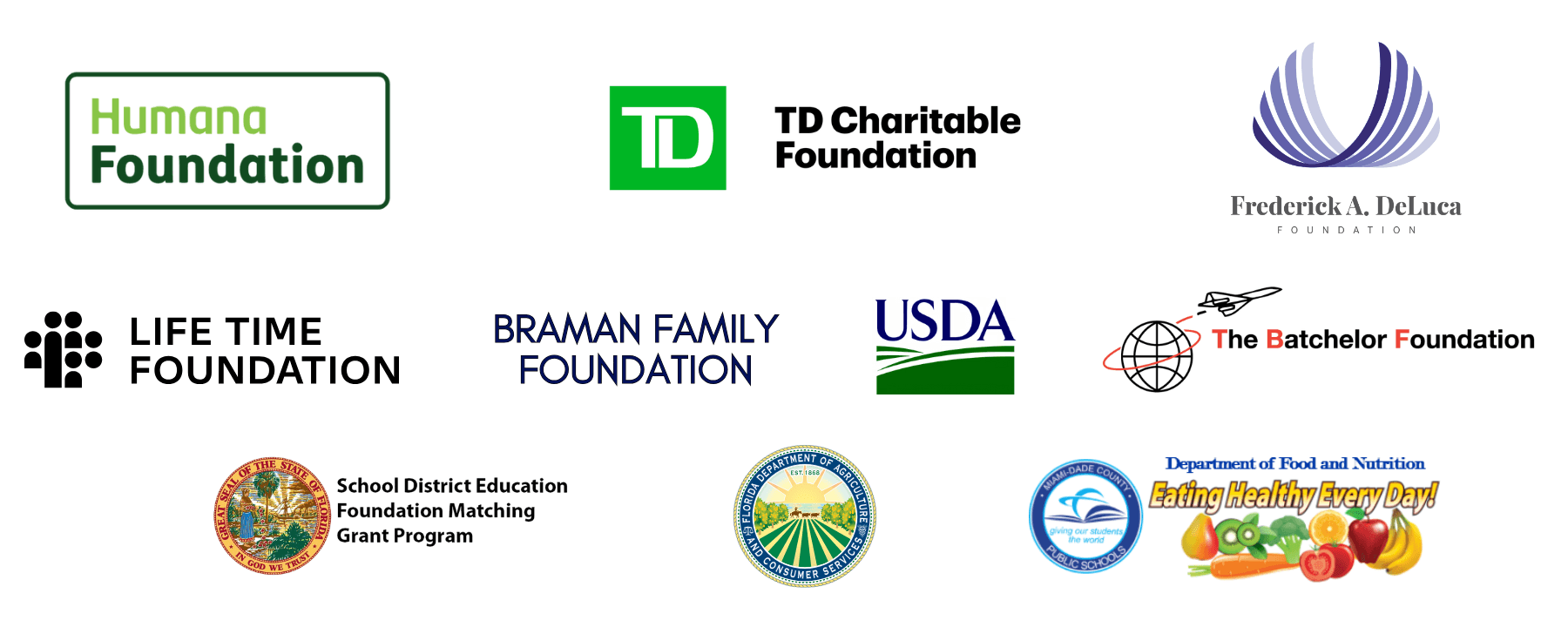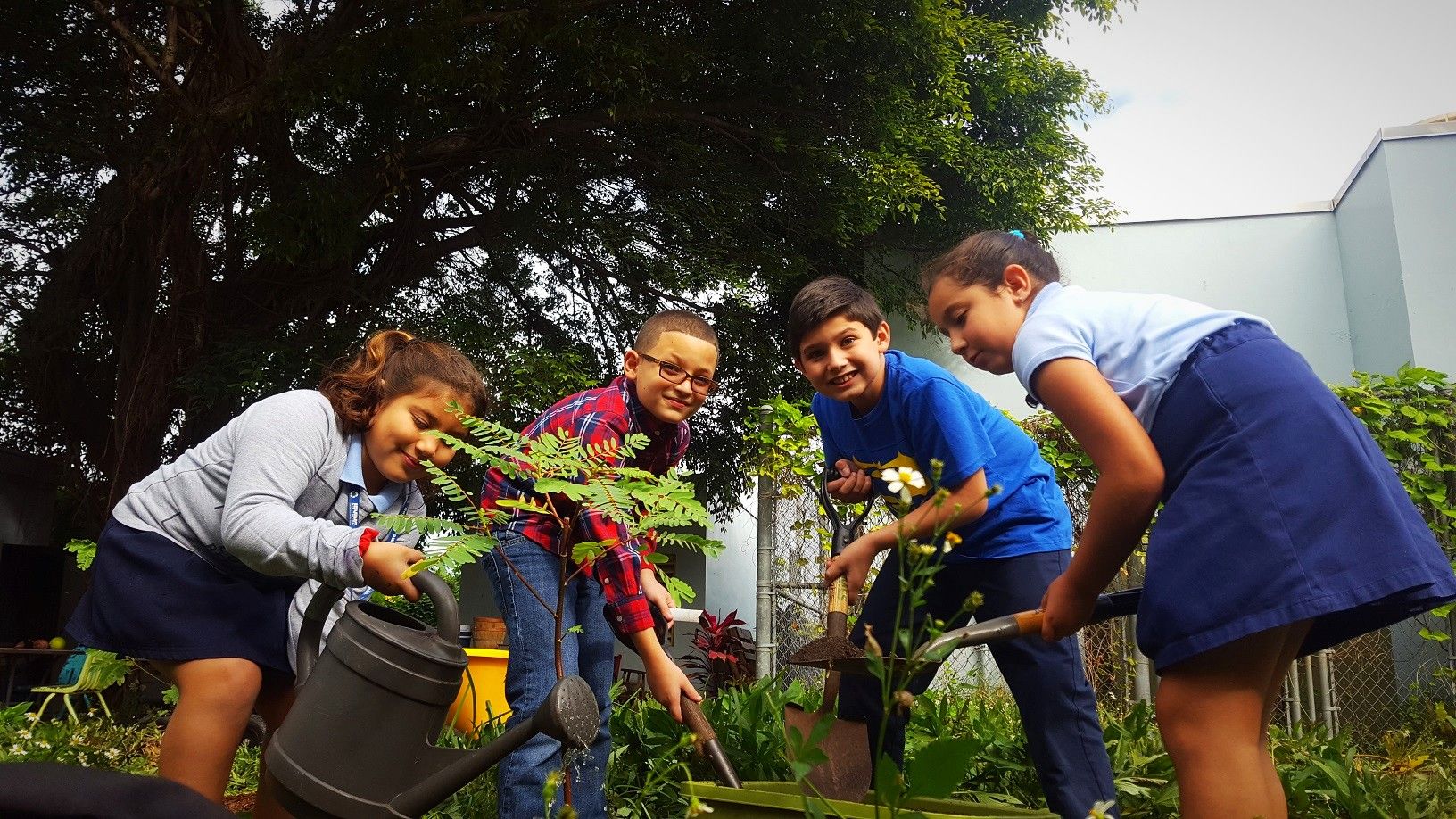Changing lives every day
Teachers integrate nutrition lessons into everyday class experiences. Students, after a short time of learning in the garden, can't wait to eat a spinach or hibiscus leaf freshly plucked from a bush. By the end of the school year, they beg to go outside and eat a freshly picked “snack” of highly nutritious fruits, salad greens, or veggies.
Through the support of M-DCPS' Department of Food and Nutrition, garden produce grown at the school sites is encouraged to be incorporated into school meals. This initiative has been widely successful with all 51 of The Education Fund's edible, garden-supported schools using freshly picked produce in their lunches regularly.
At The Education Fund's 30 Food Forests, the bounty of produce overflows, allowing for regular harvesting of the multitude of edible plants. Families reap the benefits when students bring home harvest bags full of produce from the Food Forests. Students are excited to be involved in the cooking process at home, knowing they helped to grow the nutritious produce. Along with the encouragement of their children to better their meals, families eat healthier as a result of the easy access to fresh fruits and vegetables,
In The Education Fund’s Food Forests for Schools initiative, student and family health is a priority.
Since 2015:
- 303,637 Harvest bags have been sent home with families
- 8,094 times school grown produce was showcased in cafeteria lunches
This has produced amazing results as shown by an independent evaluator:
In 2024-2025
49% of the students improved their attitudes towards food.
52% of the students improved their eating habits.
53% of the students increased their knowledge of nutrition.
Supported by:



